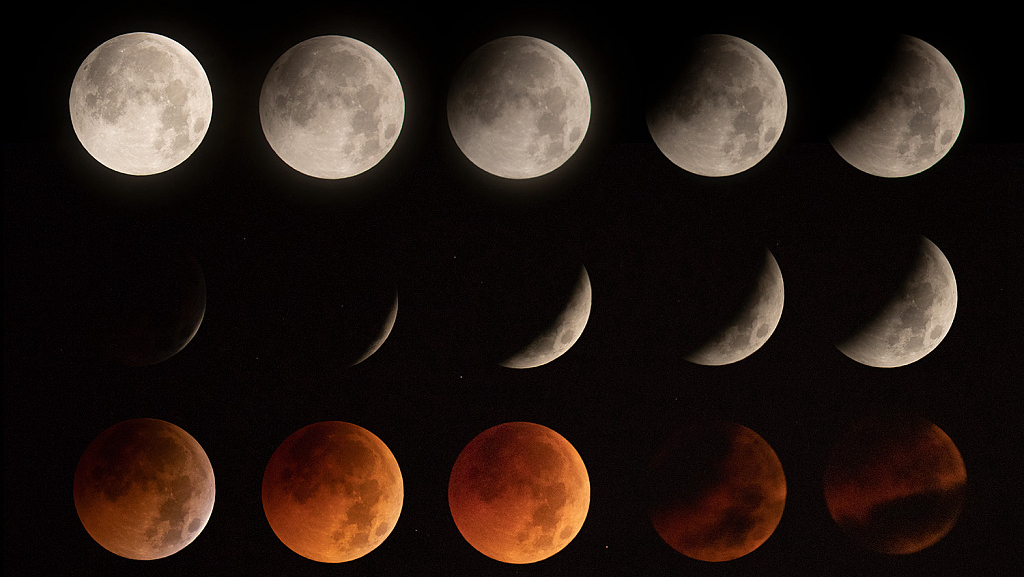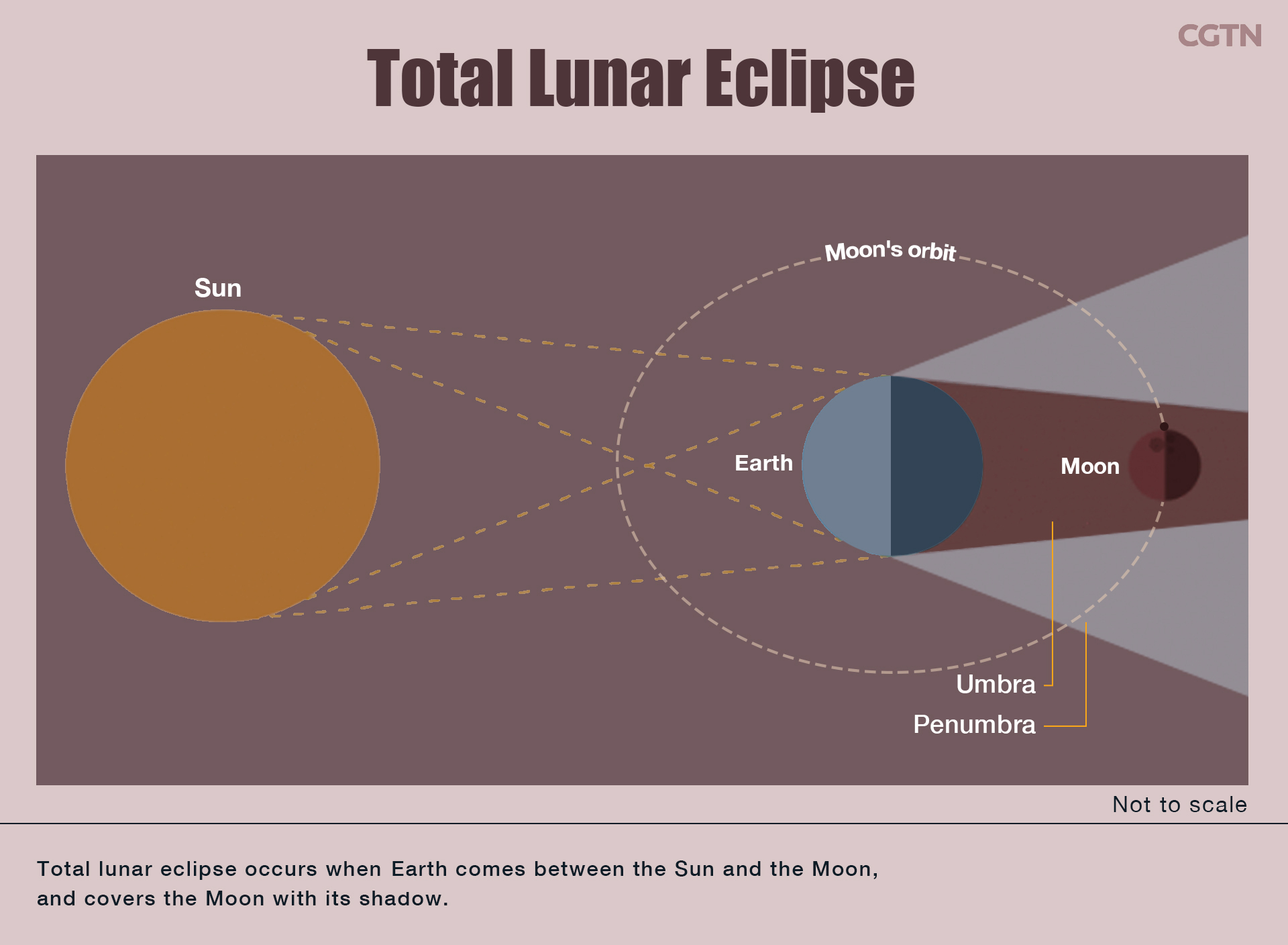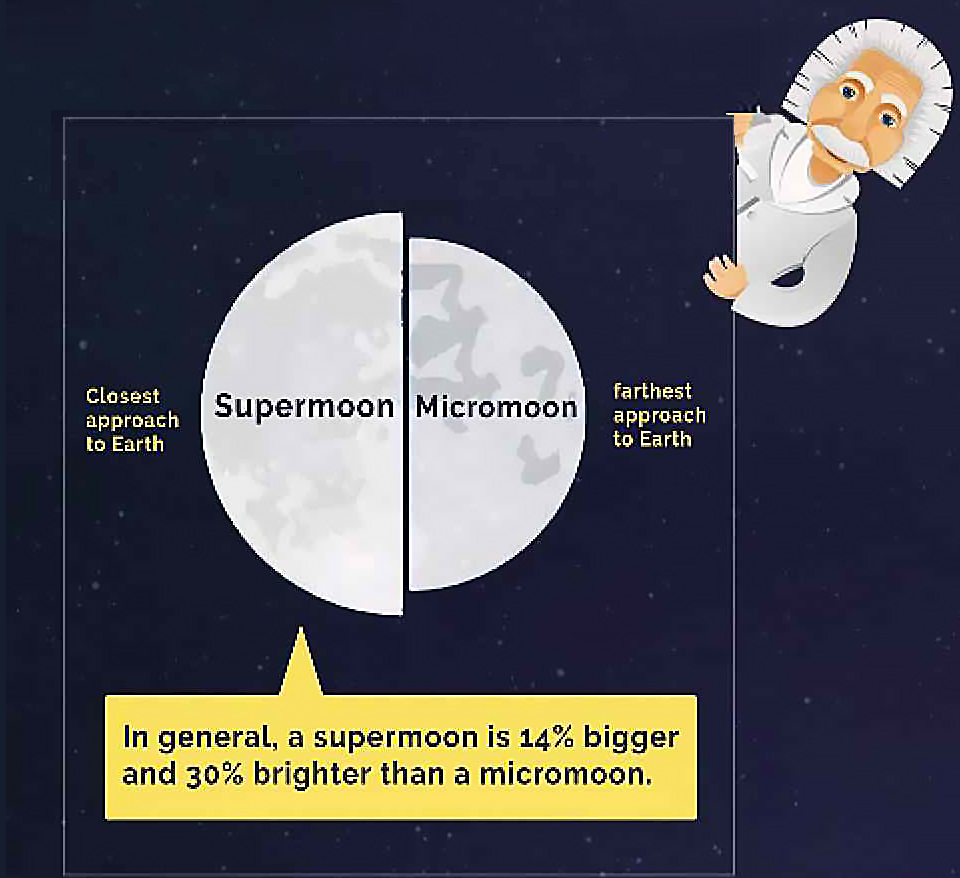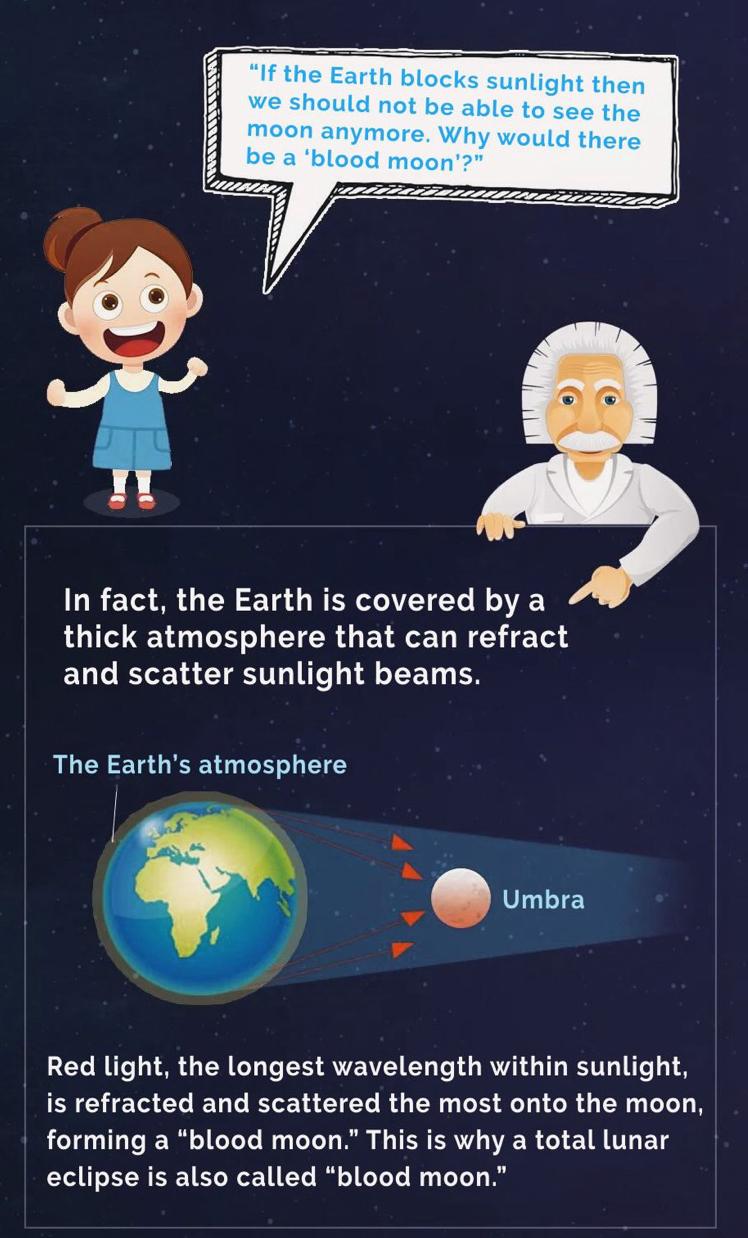
Astronomy
16:01, 19-Jan-2019
Three-in-one: Sunday’s 'super blood wolf moon' to light up the night
By Pan Zhaoyi

Stargazers around the world will have a rare opportunity to witness a three-in-one astronomical spectacle known as the “super blood wolf moon” on Sunday night (EST).
As many as 2.8 billion people across all of North America, parts of Europe, West Africa, and northernmost Russia will have a view of the entire lunar eclipse, which will begin minutes before midnight on the U.S. East Coast (5 a.m. GMT), according to Space.com.

Three-in-one astronomical spectacle: Super blood wolf moon. /CGTN Infographic
Three-in-one astronomical spectacle: Super blood wolf moon. /CGTN Infographic
Things you want to know about the rare phenomenon
-What is a supermoon?-
A supermoon happens when a full moon is at the closest point of orbit to earth, which makes it 14 percent larger than its usual appearance.
While spinning, the moon is revolving around earth along an elliptical orbit, one side of which (apogee) is about 30,000 miles (50,000 km) farther from earth than the other (perigee).

CGTN Infographic
CGTN Infographic
-Why blood?-
The so-called blood moon is what we've known as a total lunar eclipse, when the moon turns into a rusty color.
The moon itself doesn't produce light. It shines just because its surface reflects the sun's rays. So when the earth moves into the middle of the sun and the moon, theoretically it will block all the sunlight away from the moon.

CGTN Infographic
CGTN Infographic
-What is the wolf moon?-
According to the Farmers Almanac, wolves will make long loud cries during full moon, so the first full moon in January became known as the wolf moon.
-What should I prepare to view?-

CGTN Infographic
CGTN Infographic
-Should I be aware of anything when I look up the lunar eclipse?-
"There are no precautions you need to take when observing a lunar eclipse, since the moon is never bright enough to hurt our eyes like the sun is," according to Walter Freeman, a physicist at Syracuse University.
"A blood moon is one of the few opportunities we have to see both the moon and the stars in the sky at the same time, since the moon is usually too bright."

SITEMAP
Copyright © 2018 CGTN. Beijing ICP prepared NO.16065310-3
Copyright © 2018 CGTN. Beijing ICP prepared NO.16065310-3